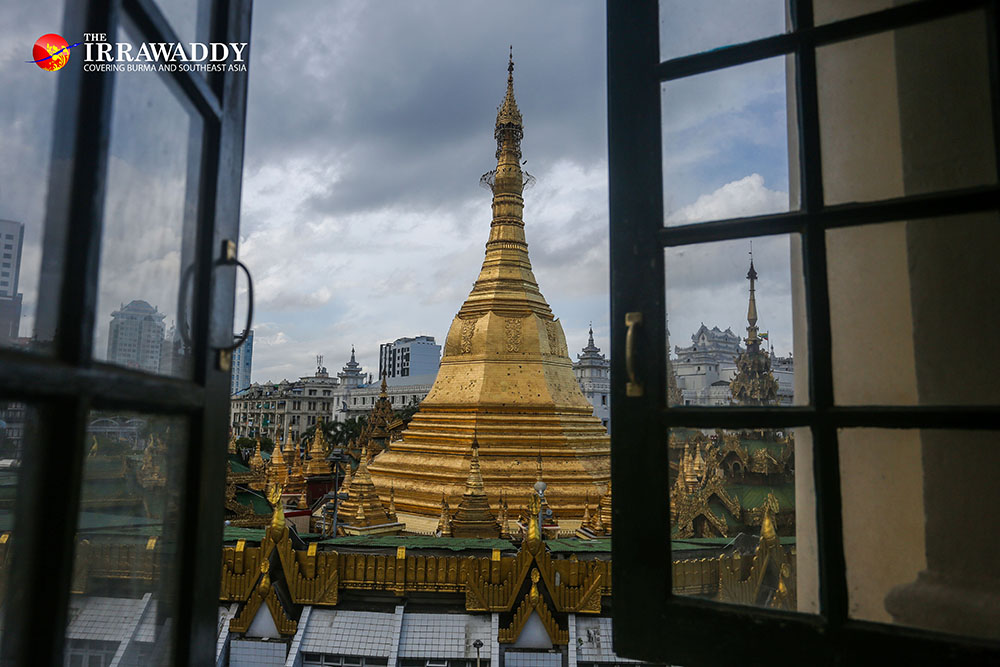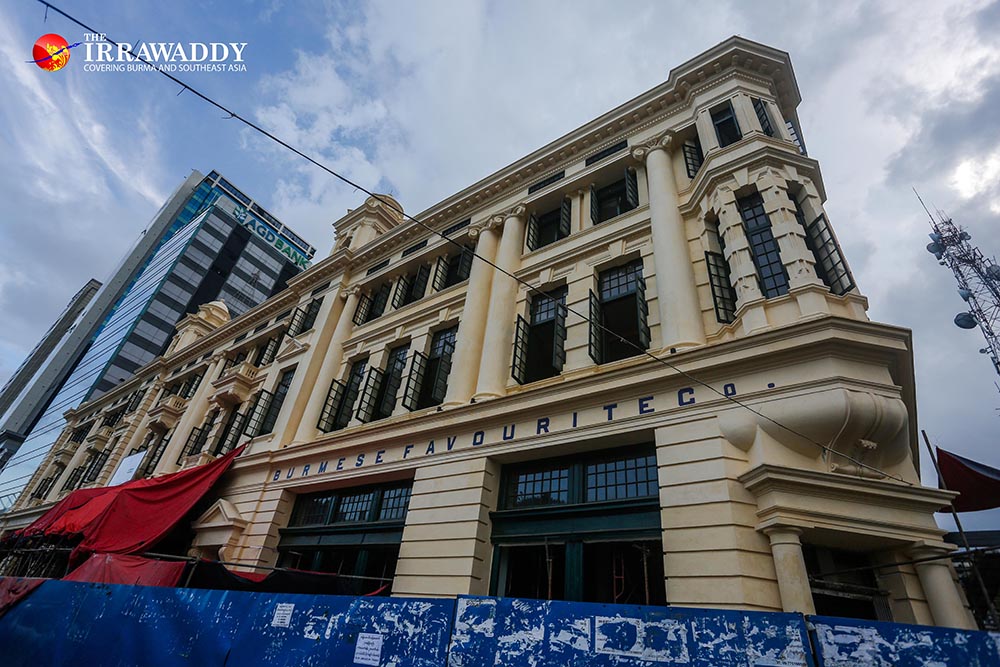YANGON—The Tourist Burma Building—built in 1905—has been renovated by heritage and craft non-profit organization Turquoise Mountain in conjunction with the Yangon regional government and is set to open its doors to the public in mid-July.
Standing on a prominent corner of downtown Yangon next to Sule Pagoda and overlooking Mahabandoola Park, the three-story structure has been restored to its original yellow and green color scheme and subtly retrofitted with modern services—air conditioning, lifts and disabled access—to make it a comfortable, functional building for both public and private use and a prime example of what can be done with deteriorating heritage structures here.

The Tourist Burma Building was originally a department store called Myanmar Aswe, or Burmese Favorite, and rivaled the regionally renowned British-owned Rowe & Co., which was located meters away at the other side of Yangon City Hall. It suffered bomb damage during World War II and in later years was home to a publishing house and film studios. It was used by the government until 2005 when all government departments were relocated to the new capital of Naypyitaw and was more or less left idle for the following decade.
As well as a careful, loving restoration, the project has been a center of vocational training with Turquoise Mountain “nurturing and spreading” skills among craftspeople.

“We’re basically facilitating, on behalf of the Yangon regional government, the whole project. They are funding the construction works and we are doing everything else—the design, facilitation, the overseeing of the works, the training and contract administration, procurement,” said Harry Wardhill, country director of Turquoise Mountain.
The teams working on the building receive on-the-job training and there are workshops given by international and local experts focused on skills for restoring heritage buildings including encaustic tiling, plasterwork, decorative painting, structural steelwork, cast iron and copper roofing.

“We’ve got about 150 people on the site today so it’s like a giant training ground,” said Wardhill.
Turquoise Mountain started working in Afghanistan in 2006 regenerating parts of Kabul’s old city and reviving traditional arts and architecture there. Here in Myanmar, its first project was the restoration of a historic building on Merchant Road in downtown Yangon for which they worked with Yangon Heritage Trust. They have since moved into traditional Myanmar crafts—jewelry, textiles and, soon, lacquer—connecting local artisans with international designers and markets.
An important aspect of the Tourist Burma Building renovation is for it to be useable to the public. At ground level, there will be an affordable restaurant and an “urban planning forum” with a scale model of Yangon as its centerpiece. The two upper floors are set to be a combination of private and public offices. The roof space will have a public garden and two event spaces.

“It will be a space to explore and celebrate Yangon’s past, present and future, engaging everyone from the public to developers, tourists to government planners,” Wardhill said of the urban planning forum.
For the first two weeks after it opens, the Tourist Burma Building will be left entirely in the hands of Turquoise Mountain, which will arrange a series of events that invite the public in and through the building, to have people who live nearby or walk past it on a regular basis experience it from the inside. Textiles displays, jewelry-crafting and lacquerware demonstrations will be just part of a series of events aimed at people of all ages.
“I think we were lucky that the government was new and fresh in, wanting to do a lot with the city. The chief minister has always been very supportive and appreciates the historical value of Yangon’s downtown [area]. We were fortunate enough to engage him early and also that he was already interested in it, even though he obviously had a thousand other things to be thinking about with the city as well,” said Wardhill.

The restoration, which was first discussed in 2016 and physically began in 2017, involved reopening the huge shopfront windows to the front and side of the building which had been bricked in. A ramp and wheelchair-accessible toilets will be incorporated. Discreet air conditioning units are being fitted above false ceilings. Wooden elements across the entire building—including window frames, floors, staircases and mezzanines—have been reconstructed with reclaimed teak.
As could be expected, it wasn’t always a smooth process.
“When we looked at the condition of the rear façade we knew it was in a bad state but we found that it was particularly bad when we got into it,” said Wardhill, who spoke about finding severe corrosion of steel reinforcements embedded in the walls and floors of the 114-year-old building. Steel columns, which had played an important role in keeping the structure standing, had over time partially eroded and lost strength at their bases.

Adding modern services while remaining sympathetic to the neoclassical architectural style proved another obstacle for teams working on the project. But both the pre-existing skill capacity and a strong thirst for learning and upskilling helped in the process.
“It’s always a joy to work with the carpenters here. The openness to learning is hugely refreshing here and makes it a particularly great place to work,” said Wardhill.
You may also like these stories:
Restored Pegu Club Receives Heritage Trust Blue Plaque
For Conservation Group Yangon Heritage Trust, the Colonial Past is Prologue
A Slice of Heritage: Dining in Yangon’s Top Heritage Restorations

















